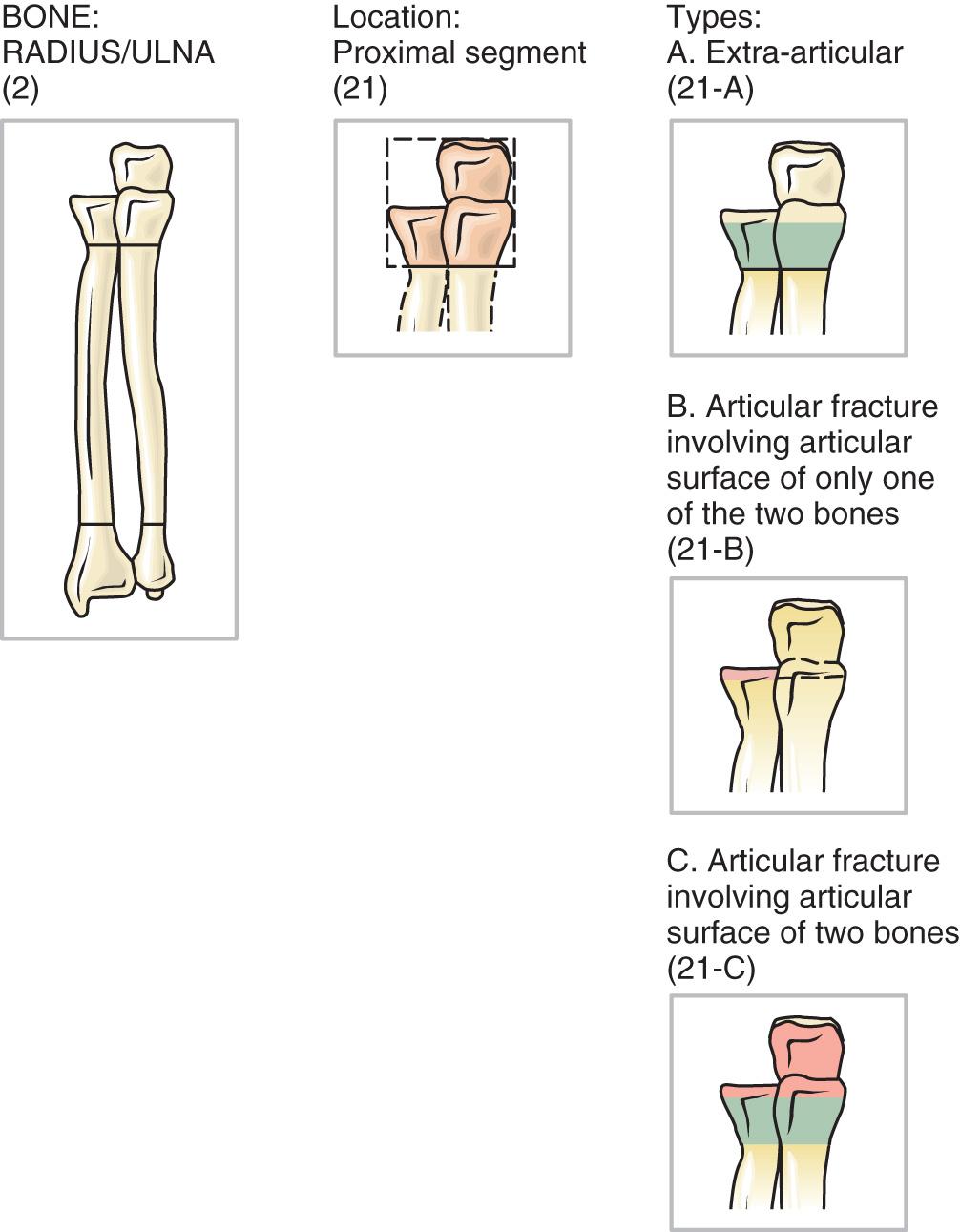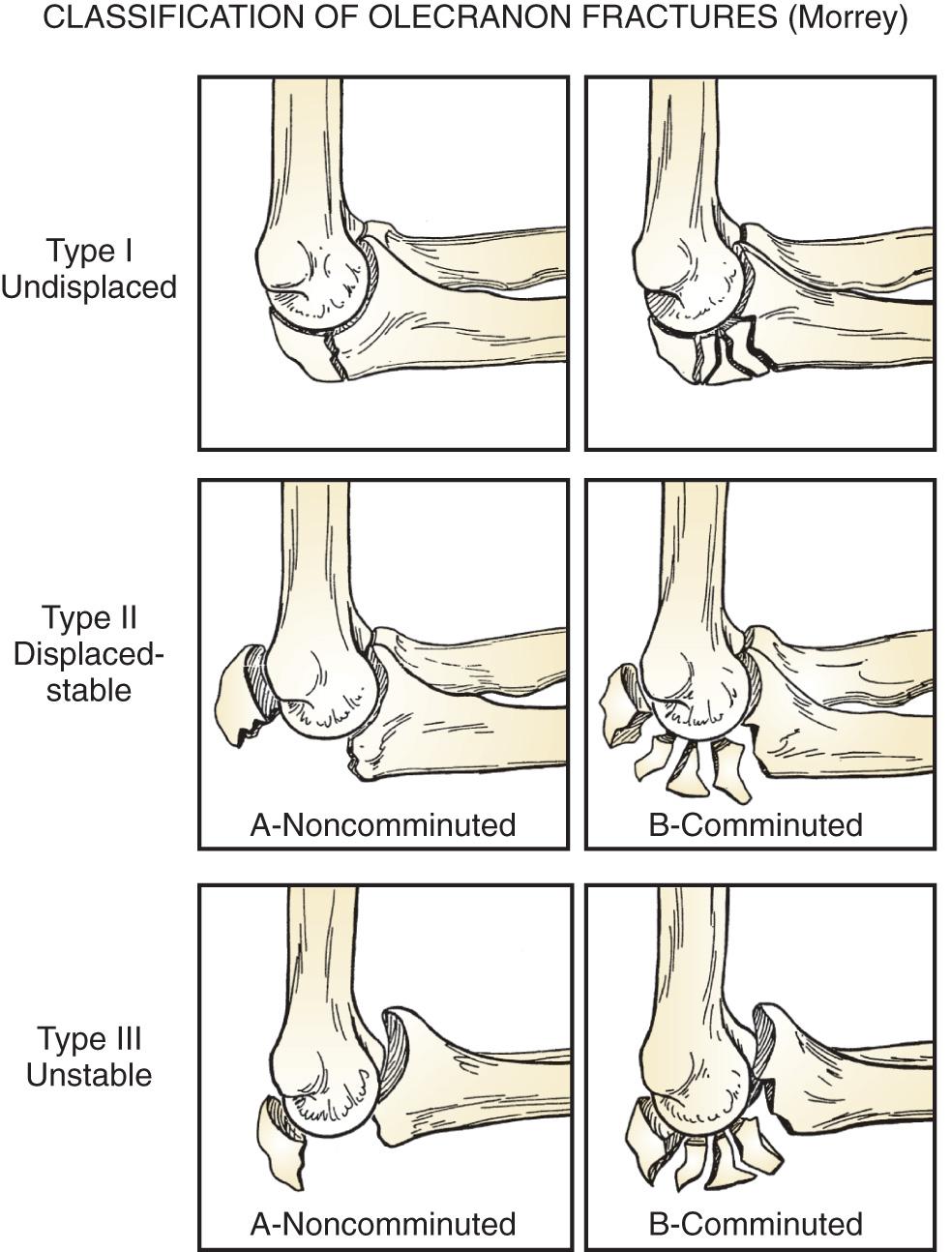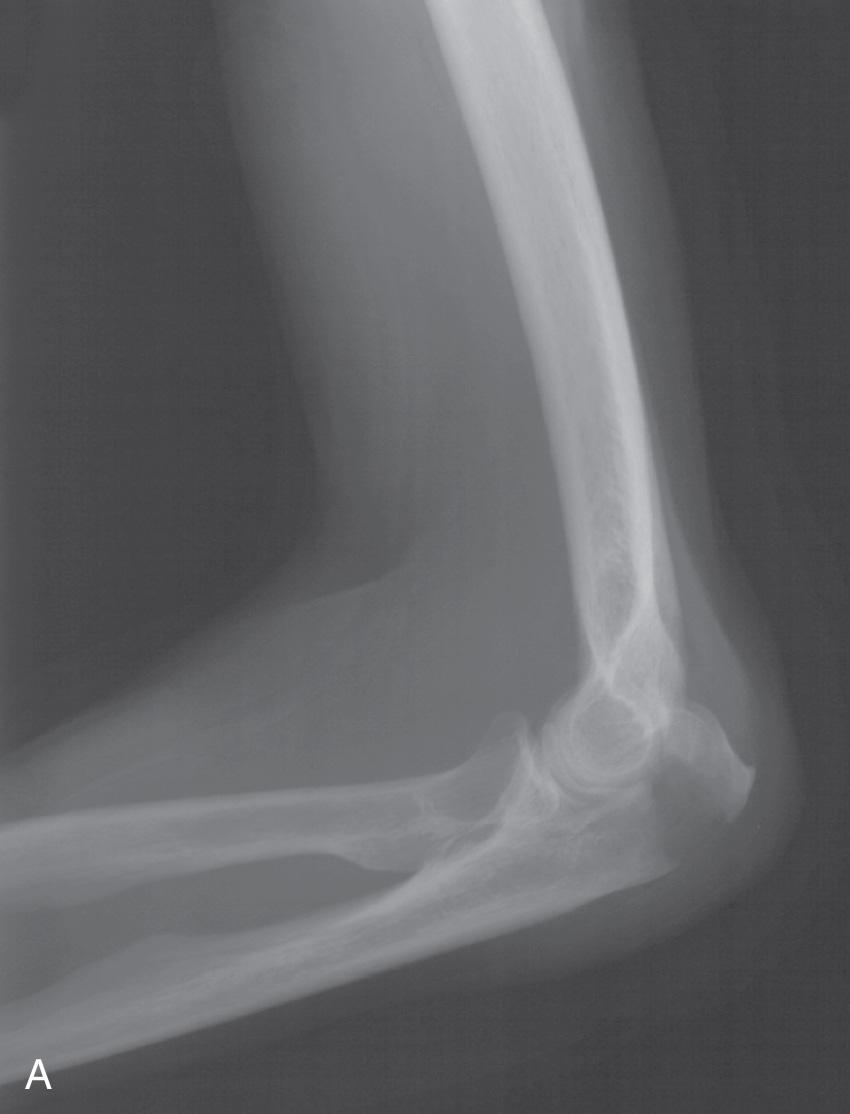Physical Address
304 North Cardinal St.
Dorchester Center, MA 02124
The subcutaneous location of the olecranon makes it vulnerable to trauma. Isolated fractures of the olecranon comprise approximately 10% of fractures about the elbow, with an estimated incidence of 1.08 per 10,000 person-years. Most result from low-energy trauma such as a fall from a height of less than 2 m, a direct blow to the elbow, or forced hyperextension. A fall on a partially flexed elbow may generate an avulsion fracture of the olecranon from the pull of the triceps. Fracture patterns differ somewhat in children and adults (see Chapter 31 ). Experimentally, radial head and coronoid fractures tend to occur with impact when the elbow is at less than 80 degrees of flexion. Olecranon fractures occurred with direct blows at 90 degrees of flexion, whereas injuries occurring with the elbow in greater than 110 degrees of flexion tended to result in distal humerus fractures.
As with all other fractures, prognosis is a function of the severity of the fracture and associated injuries.
The olecranon and coronoid process form the semilunar or greater sigmoid notch of the ulna. This highly congruent articulation confers considerable inherent stability to the ulnohumeral joint. A transverse “bare area” devoid of cartilage is found at the midpoint of the semilunar notch, which must be considered when restoring articular congruity after fracture. Appreciation of the temporal appearance of the ossification centers is important when dealing with the child (see Chapter 31 ). The patella cubiti is an accessory ossicle embedded in the distal triceps and should not be confused with a fracture.
Considering this fracture is by definition intraarticular, hemarthrosis is invariably present. Because the proximity of the ulnar nerve makes it vulnerable at injury and at treatment, careful assessment and documentation of status are important initially and subsequent to treatment. Simple anterior-posterior and lateral radiographs are typically adequate to diagnose and treat simple fractures; more complex injuries benefit from computed tomographic (CT) analysis.
Several classification schemes have been described. Colton classified olecranon fractures according to the degree of displacement and fracture pattern. Type I fractures are nondisplaced fractures in which displacement remains less than 2 mm with elbow flexion to 90 degrees or extension against gravity. The patient can actively extend the elbow against gravity. Type II fractures are displaced fractures, which may be further subtyped into avulsion fractures, oblique and transverse fractures, comminuted fractures, and fracture–dislocations.
In a system suggested by Horne and Tanzer, type I fractures are either transverse intraarticular fractures of the proximal third of the olecranon or extraarticular fractures involving the point of the olecranon. Type II fractures are oblique or transverse intraarticular fractures involving the middle third of the olecranon fossa with subtypes A and B according to fracture pattern. Type III fractures involve the distal third of the olecranon fossa. From a review of 100 cases, treatment recommendations were then suggested.
The AO classification system is consistent with their comprehensive fracture classification system ( Fig. 42.1 ). Type A fractures are extraarticular, type B are intraarticular if involving either the radius or the ulna, and type C involve both articulations. Additional subtypes denote comminution, displacement, and location. Although the AO classification may be useful for research purposes, its complexity renders it awkward in clinical practice.

Morrey simplified the process based on three considerations: stability, comminution, and displacement. The Mayo classification ( Fig. 42.2 ) thus divides olecranon fractures into three types, facilitating classification and providing an algorithm for treatment.

Type I fractures, representing approximately 5% of olecranon fractures, are undisplaced and are subdivided into type IA, noncomminuted, and type IB, comminuted fractures. Because these fractures are by definition nondisplaced, the degree of comminution is not relevant, and types IA and IB may be regarded and treated as the same lesion.
Mayo type II fractures account for approximately 80% to 85% of all olecranon fractures and may be noncomminuted (type IIA) or comminuted (type IIB). Because the collateral ligaments are intact, the forearm is stable relative to the humerus.
Mayo type III fractures whether noncomminuted (IIIA) or comminuted (IIIB) are unstable displaced fractures and represent a fracture–dislocation.
Olecranon fractures associated with subluxation of the radial head and/or the coronoid process are considered complex injuries. Anterior fracture dislocations are often referred to as transolecranon fracture–dislocations because the mechanism of injury appears to involve anterior displacement of the forearm, resulting in the trochlea being driven through the olecranon process. The radial head is displaced anteriorly, and this injury is differentiated from the Bado type I Monteggia fracture by the destabilization of the ulnohumeral joint with preservation of the radioulnar relationship. Posterior fracture–dislocations of the olecranon are similar to type II Monteggia fractures, with posterior dislocation of the radial head and an apex posterior fracture of the ulna. These fractures may be considered a variant of the posterior Monteggia lesion. Both posterior and anterior variants are commonly associated with fractures of the coronoid, which are usually basal fractures involving 50% to 100% of the height of the coronoid. In anterior olecranon fracture–dislocations, reduction of the olecranon and coronoid fracture fragments results in restoration of stability, with little implication for forearm dysfunction. Posterior olecranon fracture–dislocations, in contrast, have significant implications, with elbow instability and forearm dysfunction being common despite fracture reduction.
The Mayo classification provides a basis for a rational treatment algorithm by fracture type and subtype and conveys prognostic value.
Nondisplaced fractures may be treated symptomatically and nonoperatively with 7 to 10 days of immobilization in midflexion and neutral rotation, followed by initiation of an active range-of-motion (ROM) program. Restriction on active elbow extension is maintained for 6 to 8 weeks, with gradual increases in extension as tolerated. Close radiographic surveillance at 1 and 4 weeks is recommended to assess for displacement and possible need for further intervention. Rarely, in select patients, type I fractures may benefit from open reduction and internal fixation (ORIF) to allow immediate motion and stability. ROM exercises are started at 3 to 6 weeks as tolerated and as fracture characteristics dictate.
Most displaced fractures require surgical intervention. Rarely, select type II fractures may be treated with nonoperative management as in type I fractures, with gratifying results but require close follow-up (personal communication, Julie Adams, MD, and Matthew Putnam, MD). Goals of intervention include anatomic reduction and rigid fixation that restores stability and extension power and allows early motion. For type IIB fractures, excision or ORIF may be considered. Fixation of displaced fractures is accomplished with a host of techniques and devices. a
a References .
Excision of fracture fragments with advancement and reinsertion of the triceps tendon is advocated in the elderly with type IIB ( Fig. 42.3 ). The theoretical disadvantages of excision, such as triceps weakness, instability, and a theoretical risk for increased arthrosis due to altered contact pressures, have not been documented. In the elderly patient with marked comminution, it is the treatment of choice.

While early reports suggest that up to 80% of the olecranon may be safely excised if the coronoid is intact, experiments in our laboratory support the safe resection of 50% of the olecranon. In fact, in the throwing athlete, Kamineni et al. demonstrated increased ligament strain if as little as 3 mm were to be resected from the posterior medial aspect of the olecranon. Those authors speculated that this instability may not be clinically relevant in low-demand, elderly patients, but it may be problematic in higher-demand athletes, active patients, or laborers.
Some recommend reattachment of the triceps at the level of the articular surface. However, experimental studies indicate a significant decrease in extension strength with anterior placement of the triceps relative to normal and to more dorsal placement. This was especially noted in the more extended positions, with the differences greatest with increasing extension. Others have speculated that excision may lead to increased risk of posttraumatic arthrosis based on cadaveric studies showing increased contact stresses with excision of 50% of the proximal ulna. The authors therefore recommend ORIF in cases in which a large proximal fragment is present.
There is limited but favorable literature on the effectiveness of resection as a treatment for the type II fracture (see Fig. 42.3 ). Gartsman noted equivalent ROM, functional status, extensor strength, pain, stability, and incidence of degenerative changes when comparing ORIF or primary excision. Of importance, the authors did document fewer complications (23% versus 4%) and reoperation (an additional 23%) in the fixation group. Such studies demonstrate that excision is a good option for treatment of the appropriate fracture in the appropriately selected patient.
Become a Clinical Tree membership for Full access and enjoy Unlimited articles
If you are a member. Log in here